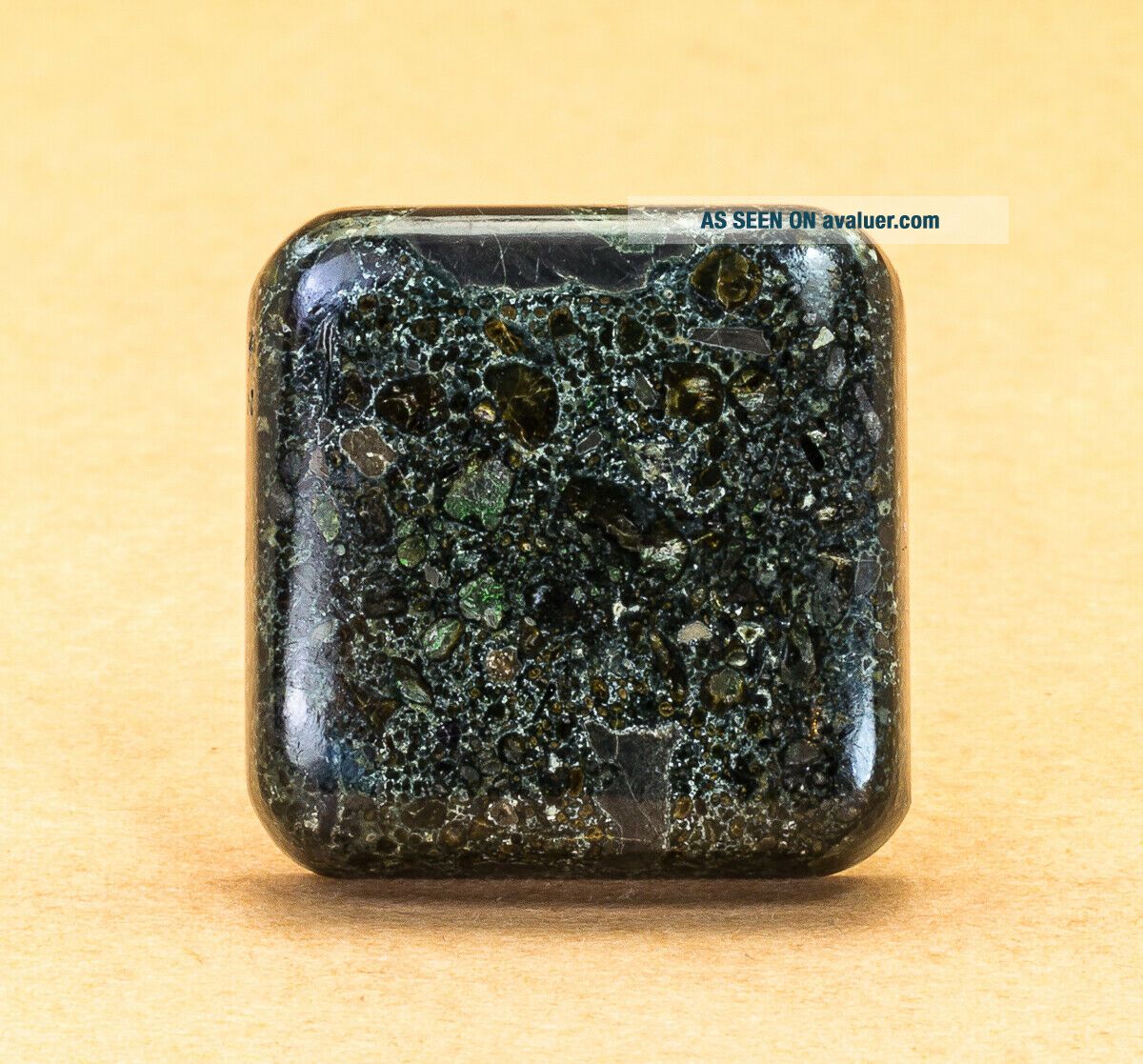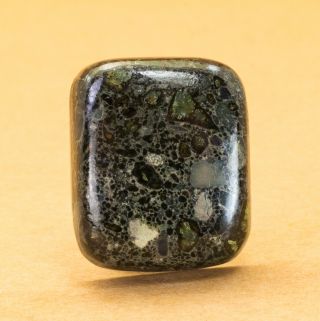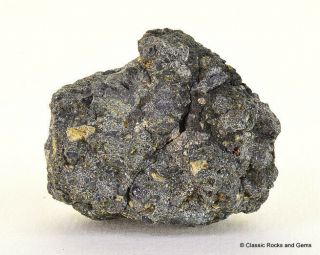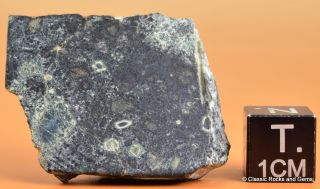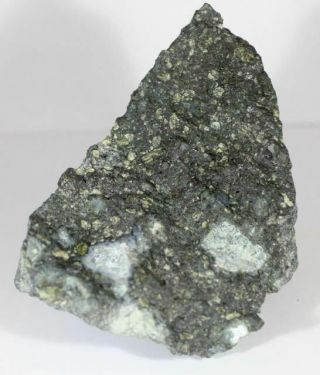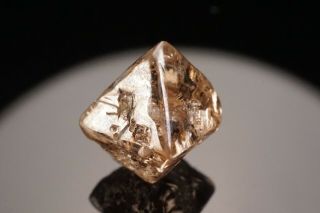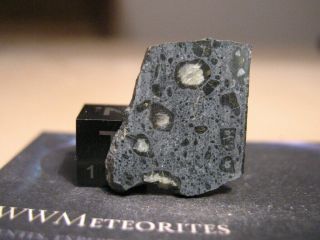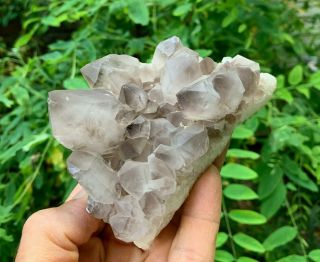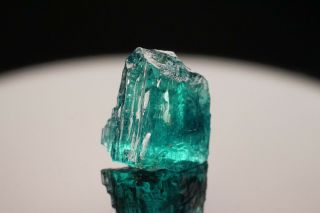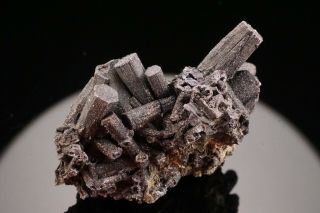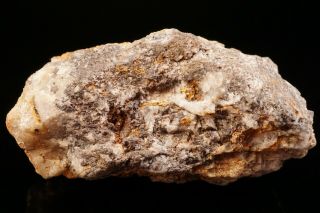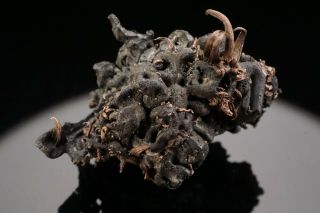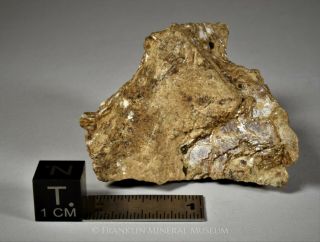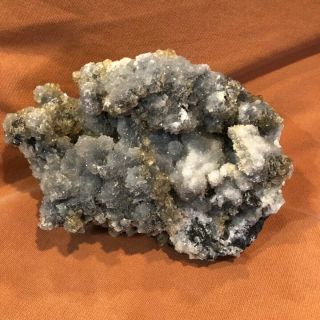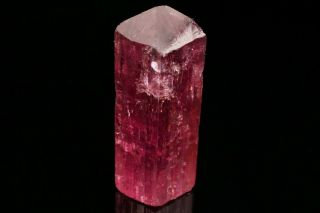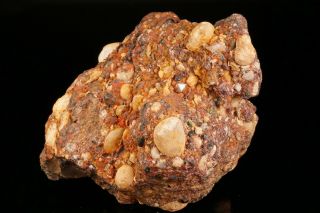Kimberlite Cabochon Diamond Bearing Rock Kimberley Mine South Africa
Item History & Price
| Reference Number: Avaluer:31676851 | Country/Region of Manufacture: Germany |
| Kimberlite Kimberley Mine SA: Diamond bearing kimberlite ultramafic igneous rock |
*******************
Size : 24 x 23.6 x 6.6 mm Weight : 44.15 carat
****************Kimberlite
Kimberlite is an igneous rock best known for sometimes containing diamonds. It is named after the town of Kimberley i...n South Africa, where the discovery of an 83.5-carat (16.70 g) diamond in 1871 spawned a diamond rush, eventually creating the Big Hole.Kimberlite occurs in the Earth's crust in vertical structures known as kimberlite pipes as well as igneous dykes and sills. Kimberlite pipes are the most important source of mined diamonds today. The consensus on kimberlites is that they are formed deep within the mantle. Formation occurs at depths between 150 and 450 kilometres (93 and 280 mi), potentially from anomalously enriched exotic mantle compositions, and are erupted rapidly and violently, often with considerable carbon dioxide and other volatilecomponents. It is this depth of melting and generation which makes kimberlites prone to hosting diamond xenocrysts.Kimberlite has attracted more attention than its relative volume might suggest that it deserves. This is largely because it serves as a carrier of diamonds and garnet peridotitemantle xenoliths to the Earth's surface. Its probable derivation from depths greater than any other igneous rock type, and the extreme magma composition that it reflects in terms of low silica content and high levels of incompatible trace element enrichment, make an understanding of kimberlite petrogenesis important. In this regard, the study of kimberlite has the potential to provide information about the composition of the deep mantle and about melting processes occurring at or near the interface between thecratonic continental lithosphere and the underlying convecting asthenospheric mantle.
Morphology and volcanologyMany kimberlites are emplaced as carrot-shaped, vertical intrusions termed 'pipes'. This classic carrot shape is formed due to a complex intrusive process of kimberlitic magma which inherits a large proportion of CO2 (lower amounts of H2O) in the system, which produces a deep explosive boiling stage that causes a significant amount of vertical flaring (Bergman, 1987). Kimberlite classification is based on the recognition of differing rock facies. These differing facies are associated with a particular style of magmatic activity, namely crater, diatreme and hypabyssal rocks (Clement and Skinner 1985, and Clement, 1982).The morphology of kimberlite pipes, and the classical carrot shape, is the result of explosive diatreme volcanism from very deep mantle-derived sources. These volcanic explosions produce vertical columns of rock that rise from deep magma reservoirs. The morphology of kimberlite pipes is varied but generally includes a sheeted dyke complex of tabular, vertically dipping feeder dykes in the root of the pipe which extends down to the mantle. Within 1.5–2 km (0.93–1.24 mi) of the surface, the highly pressured magma explodes upwards and expands to form a conical to cylindrical diatreme, which erupts to the surface. The surface expression is rarely preserved, but is usually similar to a maar volcano. The diameter of a kimberlite pipe at the surface is typically a few hundred meters to a kilometer (up to 0.6 mile).PetrologyBoth the location and origin of kimberlitic magmas are areas of contention. Their extreme enrichment and geochemistry has led to a large amount of speculation about their origin, with models placing their source within the sub-continental lithospheric mantle (SCLM) or even as deep as the transition zone. The mechanism of enrichment has also been the topic of interest with models including partial melting, assimilation of subducted sediment or derivation from a primary magma source.Historically, kimberlites have been subdivided into two distinct varieties termed 'basaltic' and 'micaceous' based primarily on petrographic observations (Wagner, 1914). This was later revised by Smith (1983) who renamed these divisions Group I and Group II based on the isotopic affinities of these rocks using the Nd, Sr and Pb systems. Mitchell (1995) later proposed that these group I and II kimberlites display such distinct differences, that they may not be as closely related as once thought. He showed that Group II kimberlites actually show closer affinities to lamproites than they do to Group I kimberlites. Hence, he reclassified Group II kimberlites as orangeites to prevent confusion.Group I kimberlitesGroup-I kimberlites are of CO2-rich ultramafic potassic igneous rocks dominated by a primary mineral assemblage of forsteritic olivine, magnesian ilmenite, chromium pyrope, almandine-pyrope, chromium diopside (in some cases subcalcic), phlogopite, enstatite and of Ti-poor chromite. Group I kimberlites exhibit a distinctive inequigranular texture caused by macrocrystic (0.5–10 mm or 0.020–0.394 in) to megacrystic (10–200 mm or 0.39–7.87 in) phenocrysts of olivine, pyrope, chromian diopside, magnesian ilmenite and phlogopite, in a fine to medium grained groundmass.The groundmass mineralogy, which more closely resembles a true composition of the igneous rock, contains forsteritic olivine, pyrope garnet, Cr-diopside, magnesian ilmeniteand spinel.Olivine LamproitesOlivine Lamproites were previously called Group II kimberlite or orangeite in response to their mistakenly being considered to only occurring in South Africa. Their occurrence and petrology, however, are identical globally and should not be erroneously referred to as kimberlite.[2] Olivine lamproites are ultrapotassic, peralkaline rocks rich in volatiles (dominantly H2O). The distinctive characteristic of olivine lamproites is phlogopite macrocrysts and microphenocrysts, together with groundmass micas that vary in composition from phlogopite to "tetraferriphlogopite" (anomalously Fe-rich phlogopite). Resorbed olivine macrocrysts and euhedral primary crystals of groundmass olivine are common but not essential constituents.Characteristic primary phases in the groundmass include: zoned pyroxenes (cores of diopside rimmed by Ti-aegirine); spinel-group minerals (magnesian chromite to titaniferous magnetite); Sr- and REE-rich perovskite; Sr-rich apatite; REE-rich phosphates (monazite, daqingshanite); potassian barian hollandite group minerals; Nb-bearingrutile and Mn-bearing ilmenite.Kimberlitic indicator mineralsKimberlites are peculiar igneous rocks because they contain a variety of mineral species with peculiar chemical compositions. These minerals such as potassic richterite, chromium diopside (a pyroxene), chromium spinels, magnesian ilmenite, and garnets rich in pyrope plus chromium, are generally absent from most other igneous rocks, making them particularly useful as indicators for kimberlites.These indicator minerals are generally sought in stream sediments in modern alluvial material. Their presence may indicate the presence of a kimberlite within the erosional watershed which produced the alluvium.



